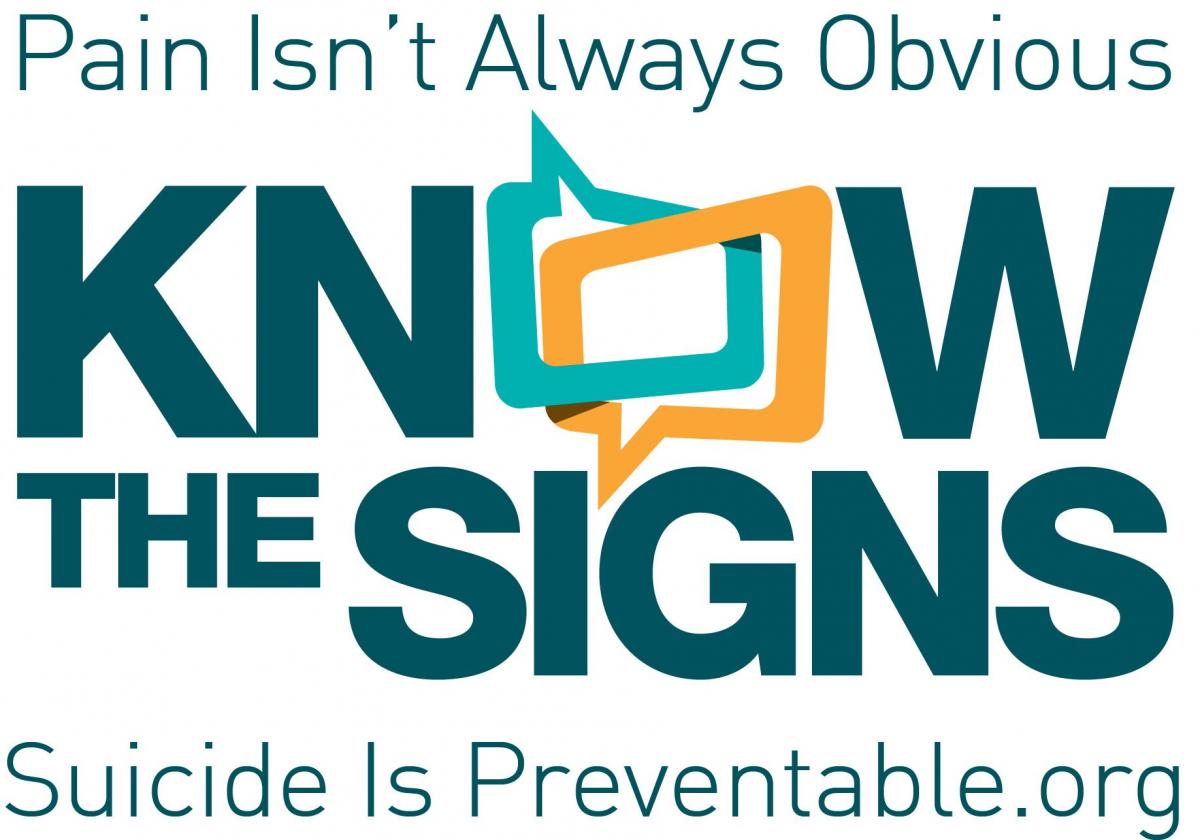YOU Can Help Prevent Suicide!
Helping prevent suicide is everyone’s job. By knowing these steps from Know the Signs, you may just save a life:
1. Know the Signs
Pain isn’t always obvious, but most suicidal people show some signs that they are thinking about suicide. The signs may appear in conversations, through their actions, or in social media posts. If you observe one or more of these warning signs, especially if the behavior is new, has increased, or seems related to a painful event, loss, or change, step in or speak up:
- Withdrawal
- Changes in sleep
- Reckless behavior
- Personality change
- Neglect of personal appearance
- Physical pain
- Substance abuse
- Giving away belongings
- Sudden mood changes
- Loss of interest
2. Find the Words
“Are you thinking of ending your life?” Few phrases are as difficult to say to a loved one. But when it comes to suicide prevention, none are more important. Here are some ways to get the conversation started:
-
Start the Conversation
-
Before starting a conversation with someone you are concerned about, be prepared. Have a list of crisis resources on hand. Practice what you will say. Plan the conversation for a time when you won’t be in a hurry and can spend time with the person. Visit the AFSP’s Resource Page for a list of national and local resources.
-
Mention the signs that prompted you to ask about suicide. This makes it clear that you are not asking “out of the blue,” and makes it more difficult for the person to deny that something is bothering them.
-
Ask directly about suicide. Talking about suicide does NOT put the idea in someone’s head and usually they are relieved. Asking directly and using the word “suicide” establishes that you and the person at risk are talking about the same thing and lets the person know that you are willing to talk about suicide.
-
You may phrase the question in a different way. If they answer “yes” to your direct question about suicide stay calm, and don’t leave the person alone until further help is obtained. Call 9-1-1 or the National Suicide Prevention Lifeline at 1-800-273-8255.
-
-
Listen, Express Concern, Reassure
-
Listen to the reasons the person has for both living and dying. Validate that they are considering both options and underscore that living is an option for them.
-
Let the person know you care. Letting them know that you take their situation seriously, and you are genuinely concerned about them, will go a long way in your effort to support them.
-
-
Create a Safety Plan
-
Ask the person if they have access to any lethal means (weapons, medications, etc) and help remove them from the vicinity. (Another friend, family member or law enforcement agent may be needed to assist with this.)
Do not put yourself in danger; if you are concerned about your own safety, call 911. -
Create a safety plan together. Ask the person what will help keep them safe until they meet with a professional.
-
Ask the person if they will refrain from using alcohol and other drugs or agree to have someone monitor their use.
-
Get a verbal commitment that the person will not act upon thoughts of suicide until they have met with a professional.
-
-
Get Help
-
Provide the person with the resources you have come prepared with. Call the National Suicide Prevention Lifeline anytime at 1-800-273-8255.
-
3. Reach Out
You are not alone in helping someone in crisis. There are many resources available to assess, treat and intervene. Crisis lines, counselors, intervention programs and more are available to you, as well as to the person experiencing the emotional crisis.
Visit the American Foundation for Suicide Prevention (AFSP) resource page for national and local resources.

